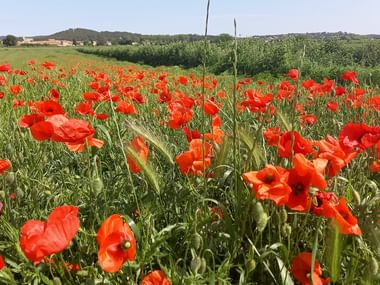It's green and blooming, the birds are chirping, the temperatures are rising and the first rays of sunshine are tickling our noses. We want to get out and get on our bikes. It's finally warm!
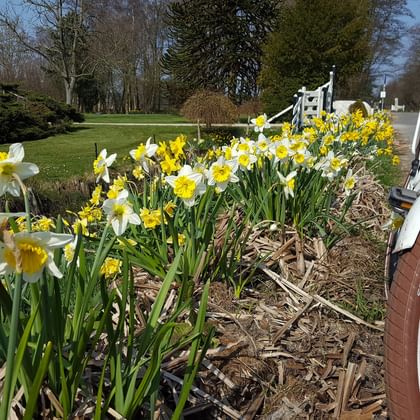

It's green and blooming, the birds are chirping, the temperatures are rising and the first rays of sunshine are tickling our noses. We want to get out and get on our bikes. It's finally warm!
Caution is nevertheless advised. In the proverbial April, for example, and throughout the rest of spring, there can be all kinds of weather. It therefore makes sense to dress according to the onion principle: A vest and a jersey or a blouse/shirt made of functional materials that quickly wick sweat away to the outside if it really is already that warm, or if you just start to sweat through exercise and exertion. A thicker or thinner fleece jacket on top, depending on the temperature. For those who don't like functional materials, we recommend cycling clothing made from merino wool, which is also breathable and dries quickly.

Rainwear should definitely be in your luggage: a water-repellent jacket and trousers. If it really pours, it is advisable to have gaiters to cover your shoes. Wet feet are not nice in the long run, and shoes often don't dry overnight. A helmet cover to protect your hair and scalp from the rain is also a good idea.
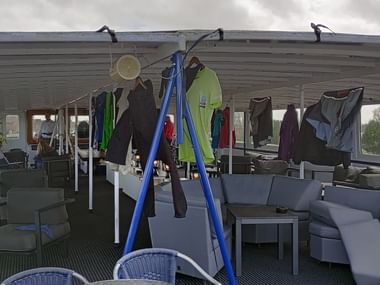
Our skin is not yet used to the sun in these months of the year and should therefore be protected. It is particularly important to protect your nose, ears and the back of your neck if you are already cycling in shorts, your legs and, of course, your arms if you are wearing short-sleeved outerwear. A sun cream with a high sun protection factor protects against skin damage. If you don't feel comfortable applying sun cream, you could opt for long trousers and long-sleeved jerseys.

What you should always have with you is fluids. It may not be really hot yet, but the body loses fluids and sweats simply through exertion, even if it doesn't seem like it. So be sure to pack at least one litre of water in your panniers or place bike bottles in the holders provided on the bike. If you don't like the taste of water from plastic bike bottles, you can spice up the flavour with effervescent tablets containing vitamins, magnesium, calcium etc.. In addition, drinks with carbohydrates and electrolytes such as sodium, potassium, magnesium or chloride are useful anyway, as potassium helps against cramps, for example, and you lose sodium when you sweat.
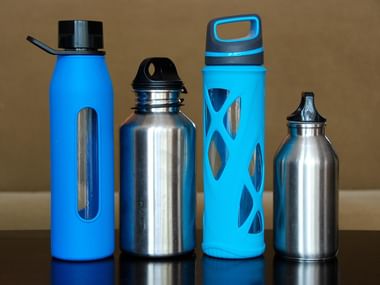
There are many regions where you can cycle wonderfully in early spring. You don't have to travel far to do so. Perhaps you would like to experience the almond blossom in the Southern Palatinate? A dream in pink and white! Thanks to its mild climate, even kiwis and figs grow in the Palatinate.
Of course, the same applies to the sea of almond blossom on Majorca.
On Lake Maggiore, with its mild climate, camellias bloom in spring in the primary colours of red, white and pink and many other colour combinations, along with many other flowers. The camellia is the symbolic flower of Lake Maggiore.
Along the popular Danube Cycle Path, you can experience the pink and white-coloured apricot blossom in the Wachau.
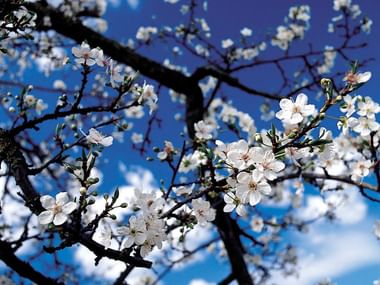
In Provence, there are fields strewn with poppies that glow red as far as the horizon. Mimosas, yellow marigolds, proud irises in white or purple, alpine pansies and violets also bloom there and, of course, fragrant lavender from June onwards.
Endless poppies also await you in the Tuscany of the north, the Uckermark.
And in the poppy village of Germerode on the Hoher Meißner, the riot of colour is immense: pink, pink, violet and blue in between on the Werratal cycle path.
Lake Constance is known for its mild climate, so the apple trees blossom early in the year and enchant the region with a sea of white and pink flowers.
The apple blossom is also an experience in the Vinschgau Valley in South Tyrol. It's hard to believe that the valley has the most sunshine in Italy each year and is easy to cycle through in spring, for example on the Adige Cycle Path or the Via Claudia Augusta.
